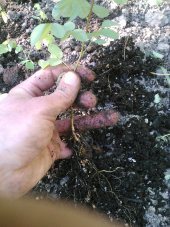
 4
4








Cameron Carter wrote:One of my main questions is about getting the thing started... I can imagine three different strategies to get the process started:
1. Put a dense amount of seeds out in fall and let them stratify naturally. Best suited win and start growing.
2. Stratify the seeds through refrigeration, nicolating, etc. and then put them out at the very end of winter tt start growing when the time is right.
3. Setup a nursey and start seeds through method two and then plant the trees a year later.
Some of my constraints are:
I have very rocky soil. I feel like direct seeding will do better as the roots will naturally gravitate to the deeper soil pockets that I won't be able to see if I am transplanting.
Lots of deer. I will have to put up some sort of semi -temp-permanent fencing to get the system established. However, I would like to remove the fencing eventually and still have it survive browsing.
Very hot and dry summers. While I would prefer not to, I think I am going to have to some irrigation to get things off the ground, but I want to limit it as much as possible.
Some of the species I am considering (which is an every expanding list) are mostly nitrofixing natives that i am collecting seeds from by the road and in parks.
Black and Honey Locust
Mesquite
Redbud
Texas Mountain Laurel
Pecan
Goldenball Lead Tree (Leauceana)
Sumac
oak
Striving to grow things as naturally, simply, and cheaply as possible! 
My YouTube channel




Check out the Food Forest Card Game: https://permies.com/wiki/141665/Food-Forest-card-game-English
 4
4




A build too cool to miss:Mike's GreenhouseA great example:Joseph's Garden
All the soil info you'll ever need:
Redhawk's excellent soil-building series





 1
1




Lorinne Anderson: Specializing in sick, injured, orphaned and problem wildlife for over 20 years.
 1
1









|
Sunglasses. AKA Coolness prosthetic. This tiny ad doesn't need shades:
Freaky Cheap Heat - 2 hour movie - HD streaming
https://permies.com/wiki/238453/Freaky-Cheap-Heat-hour-movie
|




